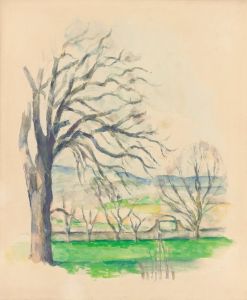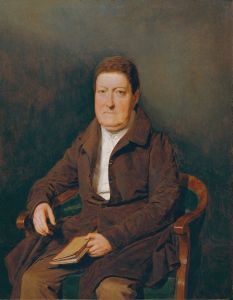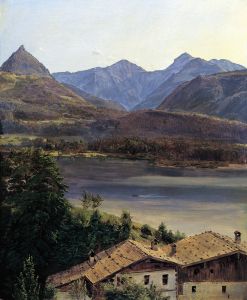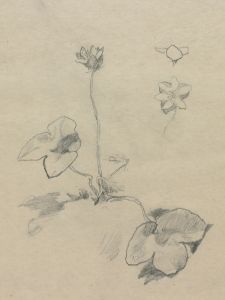
Baumstudie
A hand-painted replica of Ferdinand Georg Waldmüller’s masterpiece Baumstudie, meticulously crafted by professional artists to capture the true essence of the original. Each piece is created with museum-quality canvas and rare mineral pigments, carefully painted by experienced artists with delicate brushstrokes and rich, layered colors to perfectly recreate the texture of the original artwork. Unlike machine-printed reproductions, this hand-painted version brings the painting to life, infused with the artist’s emotions and skill in every stroke. Whether for personal collection or home decoration, it instantly elevates the artistic atmosphere of any space.
Ferdinand Georg Waldmüller (1793–1865) was an Austrian painter and one of the most prominent figures of the Biedermeier period. Known for his detailed and realistic depictions of landscapes, portraits, and genre scenes, Waldmüller was a master of capturing the natural world with precision and sensitivity. Among his many works, Baumstudie (translated as "Tree Study") is a notable example of his dedication to studying and portraying nature.
Baumstudie is a study painting that reflects Waldmüller’s keen observation of the natural environment. The artwork focuses on a tree or trees, rendered with meticulous attention to detail. Such studies were a common practice for Waldmüller, as he often created preparatory works to refine his understanding of light, texture, and form in nature. These studies were not only exercises in technical skill but also served as a foundation for his larger compositions. Waldmüller’s approach to painting was deeply rooted in direct observation, and he frequently worked en plein air (outdoors) to capture the nuances of natural light and atmosphere.
The exact date of Baumstudie is not widely documented, but it is consistent with Waldmüller’s broader body of work from the mid-19th century. During this period, he was particularly focused on landscape painting and the interplay of light and shadow. His tree studies, including Baumstudie, demonstrate his ability to render the intricate textures of bark, leaves, and surrounding foliage with remarkable accuracy. These works also highlight his interest in the scientific and aesthetic aspects of nature, aligning with the Romantic and Biedermeier ideals of his time.
Waldmüller’s tree studies are often celebrated for their ability to convey a sense of stillness and timelessness. By isolating a single element of the natural world, such as a tree, he invites viewers to appreciate the beauty and complexity of even the most ordinary aspects of the environment. This focus on nature’s details reflects the Biedermeier emphasis on domesticity, simplicity, and a connection to the natural world.
While Baumstudie may not be as widely recognized as some of Waldmüller’s larger works, it remains an important example of his artistic process and his commitment to studying the natural world. Today, Waldmüller’s works, including his studies, are held in high regard and can be found in various museums and private collections, particularly in Austria and Germany. His contributions to 19th-century art continue to be appreciated for their technical brilliance and their ability to capture the essence of the world around him.


















